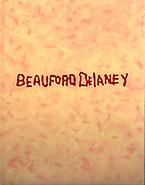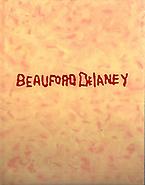Like many African-American artists living in the United States during the early twentieth century, Beauford Delaney moved to Europe, and specifically Paris, to pursue his artistic career. Living and working in a city free of racial discrimination and social pressures to pursue realism, Delaney had the freedom to explore abstraction.
Beauford Delaney, born in Knoxville, Tennessee, studied with a local artist before moving in 1923 to Boston to study classical technique at the Massachusetts Normal Art School, the Copley Society, and the South Boston School of Art. In Boston, Delaney was exposed to black activist politics by associating with some of the most radical African-Americans of the time, including Countee Cullen and William Monroe Trotter. In 1929, Delaney moved to New York City and began painting strong representational portraits of members of the New York elite and notables such as Marion Anderson, Ethel Waters and Duke Ellington. In 1930, Delaney studied at the Art Students League with John Sloan and Thomas Hart Benton and met among others Richmond Barthé, Charles Alston and James A. Porter. Interested in all the arts including poetry and jazz, Delaney formed life-long friendships with James Baldwin, Palmer Hayden, Al Hirshfeld, Henry Miller, Alfred Steiglitz and Ellis Wilson. Delaney’s paintings of the 1940s and early 1950s consist largely of modernist interiors and street scenes, executed in impasto with broad areas of vibrant colors.









